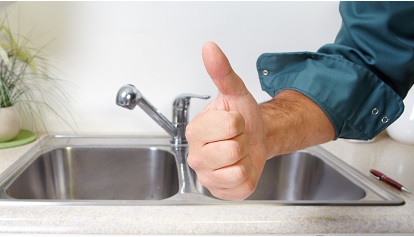
There are times in life that you definitely need professional help to handle an issue or a goal. I would never recommend performing your own dental procedures, or trying to learn a foreign language without ever hearing it spoken. But there are times that with just some pointers from online sources, the proper tools, and a bit of DIY spirit, you can avoid paying professional prices to get the job done.
Plumbing
Replacing a toilet flap valve (the flapper): If your toilet is running and you have to jiggle the handle, you probably need a part that costs about $5. Don’t forget to shut off the water supply behind the toilet first. Then it can be as simple as lifting the flapper off and replacing it with a new one. YouTube is a great place to guide you in figuring out which flapper you’ll need to match yours, and how to perform this 10 minute fix.
Loose, rocking toilet: Pop off the bolt caps, and simply tighten the bolts with a wrench. If it still rocks, or doesn’t seem better, you may need to add a washer. If you have trouble turning the bolts, or they are really rusty, add some oil like Liquid Wrench, PB Blaster, or even WD-40. If your problem is that the floor itself is uneven, search online for how to properly shim a toilet.
Leaky faucet: First turn off the water either underneath the sink or at the main water shutoff. Open the handle(s) all the way to allow any water in the lines to drain out. Set a towel in the sink to prevent small parts from falling down the drain. Carefully disassemble the handle, and then pull out the valve stem that is the likely culprit of the leak. Insert a new valve stem, and reassemble. If you need guidance on what kind of replacement valve stem to buy, take the old one into your local hardware store, and they’ll help you match it up.
Fixing Walls
Small holes and dents in your walls: If you can stick your finger all the way through the drywall, you need a patch. If it’s just a deep scratch or dent, you should be able to simply fill it. For under $10 you can buy a patching kit: complete with a putty knife, a patch piece, spackle, and fine grit sandpaper. (You can also buy supplies separately.) The three simple keys to nicely patched walls is: time, scraping away excess spackle to avoid lumps, and smooth sanding.
Painting: Unless you have very high ceilings, a lot of specialty moldings, or other unique features, painting is the premiere DIY. There are a few tricks to a good paint job: Don’t overload the brush or roller; be careful not to press too hard while you move across the surface; and resist the temptation to go over and over a spot that isn’t covering well. All those things will result in messy, rather than smooth, results. Move at an even pace, using light pressure, and plan to do a second coat.
Leaking Gutters
Unless you are unsteady on a ladder, or are afraid of heights, you can repair leaking gutters yourself. If there is just a small hole, it can be filled quickly with caulk. If the leak is larger, you’ll need to purchase a patch that is the same material as your gutters (whether aluminum, plastic, etc.). Large corroded sections are a bit trickier, but you can still do these yourself. Ask for guidance at your local home improvement store, and watch an online video or two, and you’ll be well on your way to fixing up your gutters to do their job properly.



